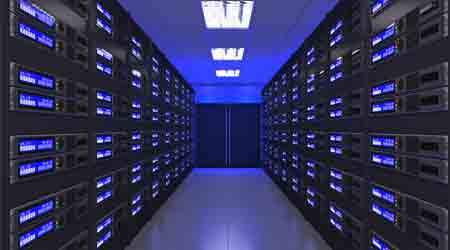Best Practices for Saving Energy In Data Centers
First of a 2-part article describing 12 proven energy-saving strategies for data centers
Data centers’ enormous energy consumption — 2 percent of U.S. electricity use — has gained national attention the last few years. Through the U.S. Environmental Protection Agency’s Energy Star Buildings program, more than 60 large enterprise data centers, run by the most prominent companies in the world, have been certified as energy efficient. In contrast, mid-tier and small data centers (under 20,000 square feet of white space) often do not prioritize energy efficiency, but devote their limited resources to data center uptime and security. Numbering in the millions and located in almost every commercial building, these smaller facilities actually account for most of the data center power draw in the U.S. To help close the energy-efficiency knowledge gap in smaller data centers, Energy Star has identified 12 common data center efficiency opportunities. Often implemented at Energy Star-certified data centers, these best practices include:
1. Hot aisle/cold aisle: Server racks should be oriented so that the fronts of the servers (where the cool air is drawn into the server) always face each other. This orientation creates alternating “hot aisle/cold aisle” rows of server racks, thus separating the cool air from the hot air and allowing air conditioning units to work more efficiently.
2. Containment: Various physical barriers should be installed to further eliminate hot and cold air mixing. Even with a hot aisle/cold aisle configuration, hot and cold air can still mix. Mixing can be minimized by using flexible strip curtains, similar to plastic supermarket refrigeration covers. Two Energy Star-certified data centers — BNY Mellon and RagingWire — employed hot aisle containment during their efficiency upgrades that led to higher chilled water temperatures and energy savings.
3. Variable speed fan drives (VSDs): Computer room air conditioners (CRACs) with VSDs can vary their fan speed with the data center server load. Because fan power varies roughly with the cube of fan speed, one half the fan speed will lead to one-eighth the fan power draw. Four Energy Star-certified data centers — BNY Mellon, Kaiser Permanente, RagingWire, and Target — employed VSDs to save hundreds of thousands of dollars annually, with paybacks ranging from 0.54 to 1.7 years.
4. Other airflow management devices are also worth considering: Blanking panels are thin plastic panels installed in unused rack space so that hot air does not flow directly from the hot aisle to the cold aisle. Staff at Kaiser Permanente used boat covers, underfloor baffles, and blanking panels to eliminate nearly 70,000 cubic feet per minute of bypass air.
Structured cabling systems can eliminate disorderly cables that might constrain exhaust airflow from rack-mounted equipment.
Floor grommets improve cooling efficiency by sealing open areas where cables enter and exit plenums (such as a raised floor). QTS’ enormous 990,000-square-foot Atlanta Metro data center installed vented tiles and grommets and sealed gaps around its raised floor to save over $30,000 per month.
Related Topics:













